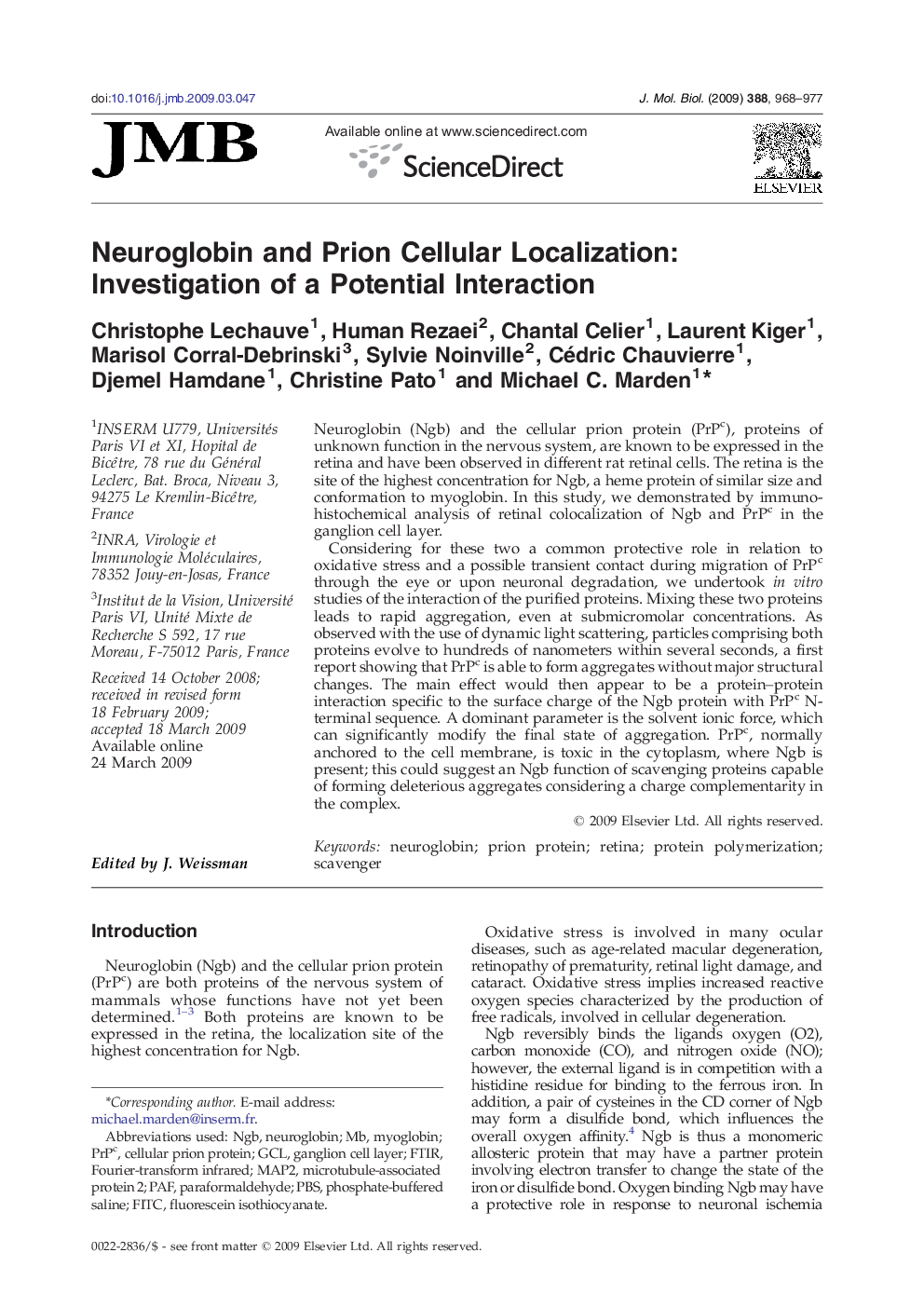| Article ID | Journal | Published Year | Pages | File Type |
|---|---|---|---|---|
| 2186460 | Journal of Molecular Biology | 2009 | 10 Pages |
SummaryNeuroglobin (Ngb) and the cellular prion protein (PrPc), proteins of unknown function in the nervous system, are known to be expressed in the retina and have been observed in different rat retinal cells. The retina is the site of the highest concentration for Ngb, a heme protein of similar size and conformation to myoglobin. In this study, we demonstrated by immunohistochemical analysis of retinal colocalization of Ngb and PrPc in the ganglion cell layer.Considering for these two a common protective role in relation to oxidative stress and a possible transient contact during migration of PrPc through the eye or upon neuronal degradation, we undertook in vitro studies of the interaction of the purified proteins. Mixing these two proteins leads to rapid aggregation, even at submicromolar concentrations. As observed with the use of dynamic light scattering, particles comprising both proteins evolve to hundreds of nanometers within several seconds, a first report showing that PrPc is able to form aggregates without major structural changes. The main effect would then appear to be a protein–protein interaction specific to the surface charge of the Ngb protein with PrPc N-terminal sequence. A dominant parameter is the solvent ionic force, which can significantly modify the final state of aggregation. PrPc, normally anchored to the cell membrane, is toxic in the cytoplasm, where Ngb is present; this could suggest an Ngb function of scavenging proteins capable of forming deleterious aggregates considering a charge complementarity in the complex.
